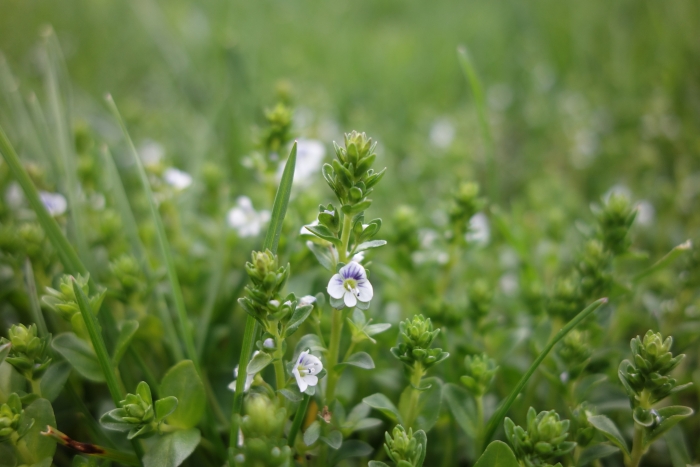Thyme-Leaved Speedwell
(Veronica serpyllifolia)
Thyme-Leaved Speedwell (Veronica serpyllifolia)
/
/

Loïc Mathieu
CC BY 4.0
Image By:
Loïc Mathieu
Recorded By:
Copyright:
CC BY 4.0
Copyright Notice:
Photo by: Loïc Mathieu | License Type: CC BY 4.0 | License URL: http://creativecommons.org/licenses/by/4.0/ | Rights Holder: Loïc Mathieu | Publisher: iNaturalist | Date Created: 2021-05-06T18:01:05-07:00 |






















Estimated Native Range
Summary
Veronica serpyllifolia, commonly known as thyme-leaved speedwell or thymeleaf speedwell, is a perennial herb native to Europe and widely naturalized elsewhere. It typically inhabits open woodlands, meadows, and grassy slopes, favoring moist, well-drained soils. This species is often found at elevations up to 10,827 feet (3,300 meters). Thyme-leaved speedwell forms low, dense mats of foliage with creeping stems that can root at the nodes. The plant features small, oval to lance-shaped leaves and produces upright flowering stems that can reach up to 8 inches high. From spring to early summer, it bears delicate white flowers with dark purple lines, which are attractive to a variety of pollinators, including flies and bees.
In cultivation, thyme-leaved speedwell is valued for its ground-covering ability and charming flowers. It is suitable for rock gardens, borders, and as an underplanting for taller perennials. This plant is easy to maintain, requiring minimal care once established. It prefers full sun to partial shade and thrives in moist, well-drained soils. While it is considered a weed in some regions, particularly in North America, its non-invasive nature makes it a manageable addition to gardens. However, it can become aggressive in lawns and turf grass, where it is often unwelcome.CC BY-SA 4.0
In cultivation, thyme-leaved speedwell is valued for its ground-covering ability and charming flowers. It is suitable for rock gardens, borders, and as an underplanting for taller perennials. This plant is easy to maintain, requiring minimal care once established. It prefers full sun to partial shade and thrives in moist, well-drained soils. While it is considered a weed in some regions, particularly in North America, its non-invasive nature makes it a manageable addition to gardens. However, it can become aggressive in lawns and turf grass, where it is often unwelcome.CC BY-SA 4.0
Plant Description
- Plant Type: Herb
- Height: 0.5-1 feet
- Width: 1-3 feet
- Growth Rate: Slow, Moderate
- Flower Color: Blue, White
- Flowering Season: Spring, Summer, Fall
- Leaf Retention: Semi-deciduous
Growth Requirements
- Sun: Full Sun
- Water: Medium
- Drainage: Slow
Common Uses
Bee Garden, Border Plant, Butterfly Garden, Groundcover, Low Maintenance
Natural Habitat
Native to Europe, inhabiting open woodlands, meadows, and grassy slopes
Other Names
Common Names: Thyme-leaved Speedwell, Whetzel Weed, Thyme-Leaf Speedwell, Creeping Speedwell
Scientific Names: , Veronica serpyllifolia, Cardia multiflora, Veronica alpestris, Veronica apennina, Veronica bolivari, Veronica bungabecca, Veronica capensis, Veronica funesta, Veronica humifusa
GBIF Accepted Name: